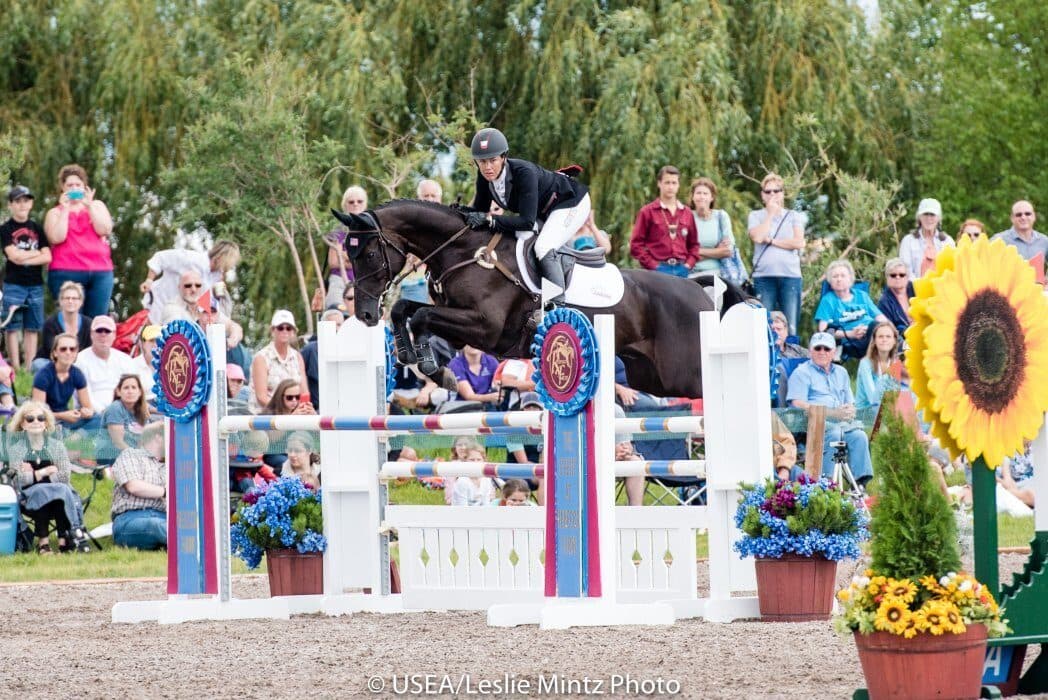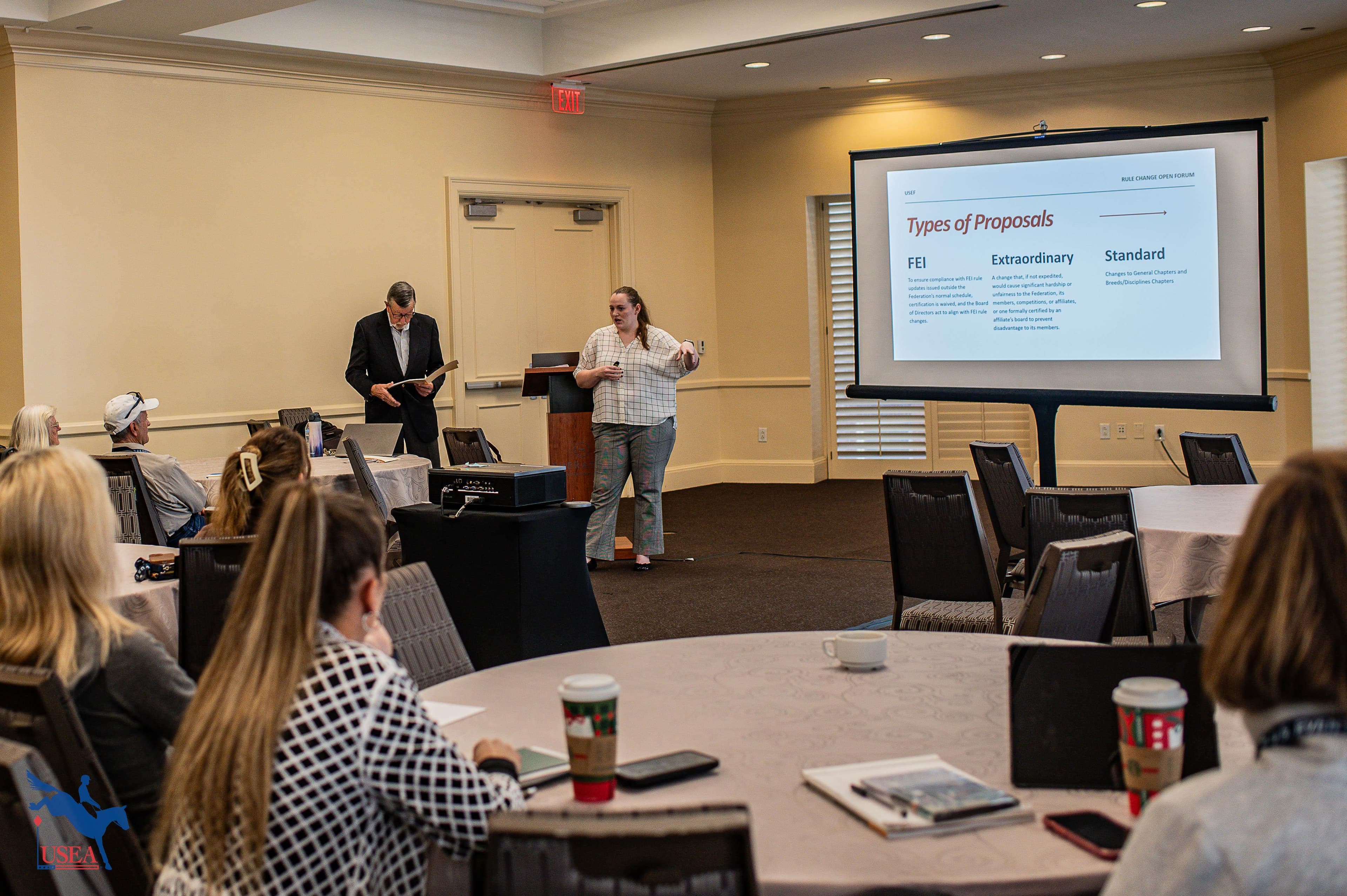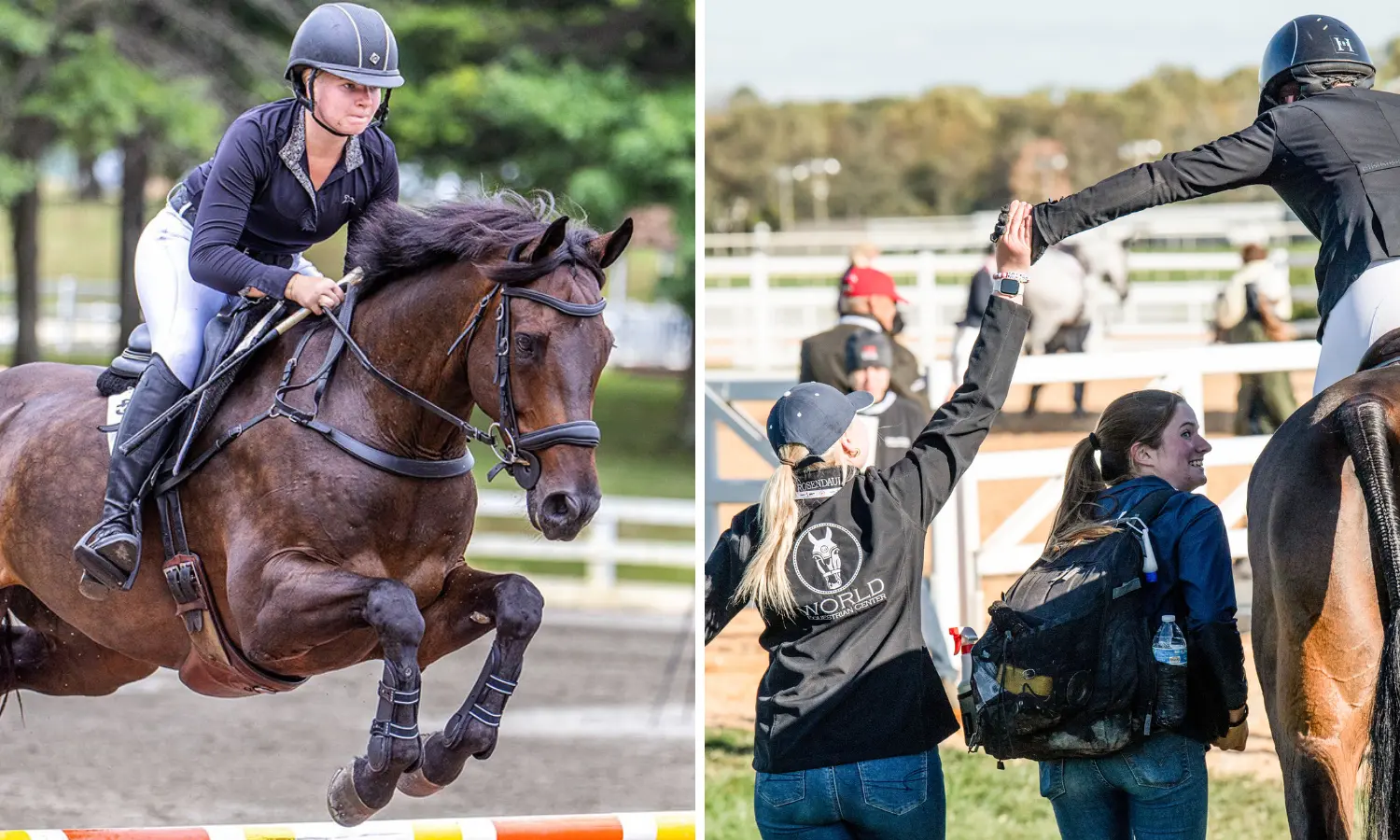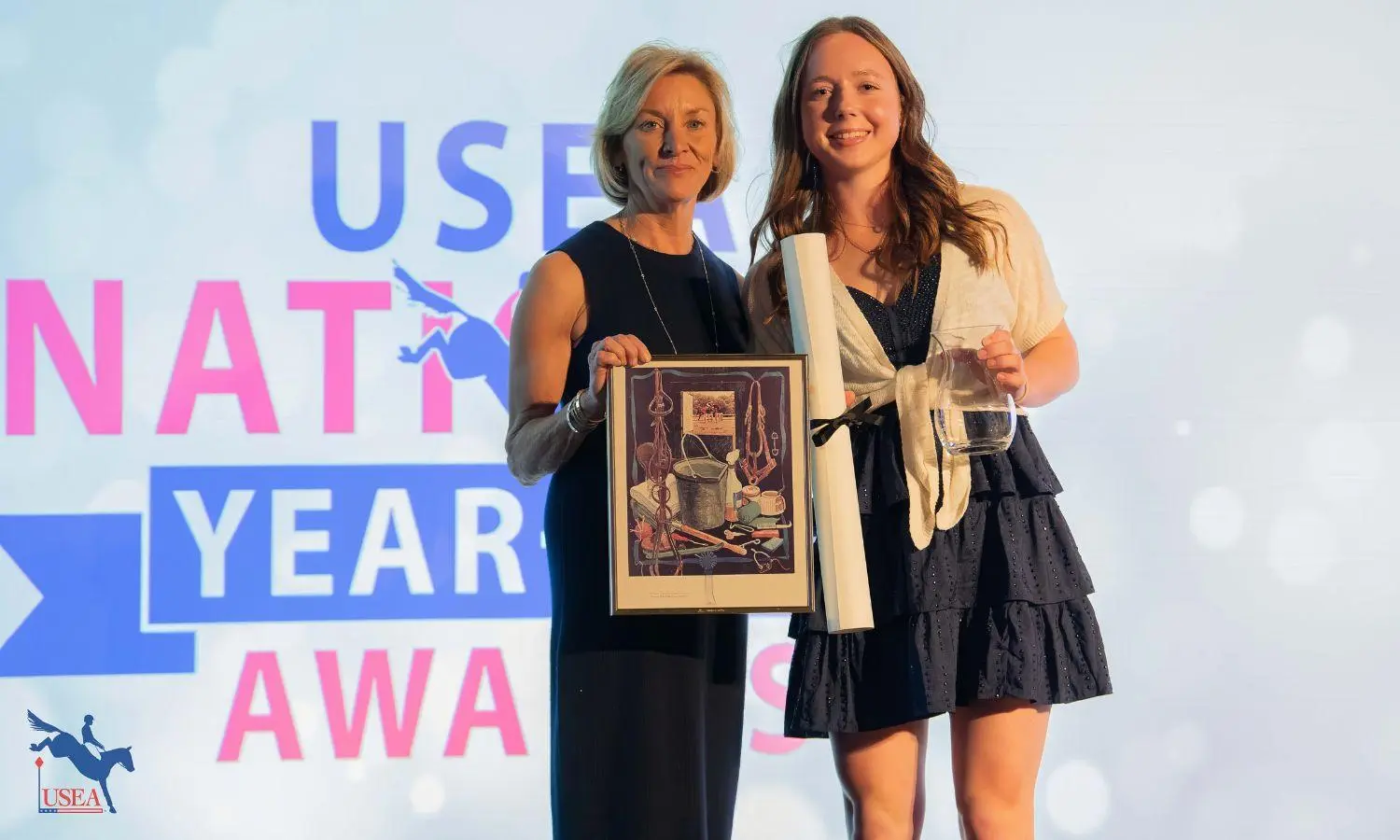Grid Pro Quo with Tamra Smith

Don't let the winter weather get you down when you can use being stuck in the arena as an opportunity to fine tune your riding! In this series, we are reviving past Grid Pro Quo articles from Eventing USA to help you use the off-season to your advantage and keep you and your horse in tip-top shape for when it's time to get back out there. Click here to check out other past Grid Pro Quo exercises to spice up your arena this winter!
Why:
If you ever come to our farm in California, it would not be surprising to find this exercise set up in one end of the outdoor arena. Over the years, I have found this exercise to be so helpful for such a wide variety of horses that it has become a staple of my program. I have found that it not only helps horses learn to move their feet quickly, but it also teaches them a lot about adjustability.
This can be great for horses that don’t quite know how to pat the ground yet, which is a tool that every successful event horse needs to know how to do. While needing to be quick with their feet through the bounces, the horses also have to learn to open their stride to cover the 33-foot two stride, and then maintain the quickness of their feet through the second bounce. It really helps the horses start to think for themselves. And the two most important things I look to create in a good cross-country horse are being quick on their feet and being able to think for themselves.
I have also found that this exercise really helps horses develop their bascule over fences. Our end goal is to always encourage our horses to jump through their entire body – lifting with their withers and back and finishing the jump from front to back. This exercise really gets them to rock back on their hind legs so that they coil their springs and push off the ground.
This is also a great exercise for lower-level riders that are still working on finding their distances. And for my lower-level students, I will sometimes put an additional ground rail out in front of the bounces to really help the rider hone their eye. This exercise helps riders learn how to react quicker, as they will have to stretch up and wait after the first bounce, but then recover quickly after the oxer for the exit bounce.
How:

When I introduce this exercise to my students, I will often start off with the bounce poles on the ground as it can be intimidating to jump a bounce as your first exercise. Then, depending on the experience level of the rider
or horse, I will even make the oxer
into a cross-rail oxer to make it a little more inviting. If the horse is more experienced, I will instead start with a low, square oxer.
This is an exercise that requires a ground crew, so it’s a great exercise to do with a few of your barn friends where you take turns jumping and setting jumps. The reason for this is that you’ll want to adjust the distance between the bounces, as well as the height of all the jumps, throughout the exercise.
Once I see that the horse and rider are comfortable with the footwork, I will make the bounces into small verticals – no more than 2 feet – and I will make the distance between 10 feet and 10 feet 6 inches. I will decide on this distance based on the horse’s natural length of stride. Regardless, I want the distance to be wide enough to teach a green horse or green rider that it is a bounce, and not a really low, really wide oxer. To further encourage the horse to put their feet down between the small verticals, I will initially have my students trot their horses into the bounce first. I don’t worry too much if the horse and rider fumble through the first few times, instead I will just have them keep making a figure-eight over the exercise until it smoothes itself out.
Before moving on to the next version of this exercise, I want to see that the horses are paying attention to the bounce. I want to see them almost hesitate before they get to the first bounce. In other words, I want to see them look ahead to the oxer before jumping into the bounce. If this is a horse or rider’s first time doing this exercise, it won’t be uncommon for them to have to repeat the exercise at this basic level several times. And it would also be appropriate for this to be the only thing the pair does for that jump school. If that’s the case, I’ll just plan on having this exercise set up for their next lesson so that we can work through the next steps that you can take.
Once the horse and rider are calmly and confidently cantering through the exercise with small verticals and oxers, I will raise the inside bounce jumps a little higher. The idea is for the horse to easily canter over the first vertical, jump the second vertical, keep going to the oxer, then jump the next vertical and canter over the last vertical.
From here, I will often start to raise the height of the center oxer until it is at, or slightly above, the competition height of the horse and rider pairing. And for the more experienced horses, I will start to shorten the distance between the verticals down to 9 feet 6 inches. With that said, if I have a very big-strided, experienced horse, I might very well leave the distance at 10 feet or 10 feet 6 inches. I want the bounces to be easy for them, all the while making them think. And with that said, if you really want to keep your ground crew busy, you can play with leaving the exit bounce 6 inches to 1 foot longer than the entrance bounce. This makes the exercise easier for the horse to execute, and will allow the rider to concentrate on their own position for a bit.
As you can imagine, this is a great exercise for horses that want to rush. Since it isn’t quite as methodical as some grids, it demands that the horse pays attention, so horses aren’t able to get into the zone quite as much as with a more traditional grid. But if I have a horse that is insistent on rushing, I will do one of two things. First, I will try adding placing poles in between the bounces and the oxer. Or, I will add another small vertical or raised cavaletti one stride after the exit bounce, and then another small vertical one stride after that. This will simply teach the horse that they need to keep paying attention and keep thinking.
About Tamra Smith
Tamra Smith is an accomplished equestrian and ICP Level IV Certified Instructor with over 25 years of industry experience. Specializing in dressage, show jumping, and eventing, Smith offers a well-rounded skill set with proven results. In addition to having ridden dressage at the Grand Prix level and having earned multiple show jumping accolades, Smith has made a name for herself in the eventing spotlight. Smith has been named to the USEF High Performance World Class List, won the USEF National CCI3* Championship, earned the USEA Horse of the Year Award, and won numerous events. To learn more about Tamra Smith please visit her website.
This Grid Pro Quo first appeared in Volume 46, Issue 2 of Eventing USA.














